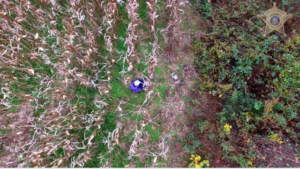
On Sunday, the Randolph County Sheriff’s Office began a search for an 81-year-old woman lost in a rural area. The search radius included rough terrain and impenetrable corn fields, prompting Sheriff Robert Graves to deploy the department’s newest drone. Within 25 minutes, the drone located the missing person, who was located and rescued without harm.
“The drone program at the Sheriff’s Office is one of our newest projects and one more project in our effort of going from ‘Good to Great in professional community service,” Graves said in a Facebook post.
As more advanced drone technology becomes available to public-safety agencies, success stories from aerial search and rescue efforts have taken off – from lost hikers to wandering dementia patients.
Last year, a police drone successfully located a lost hunter in a swampy Minnesota wildlife area. The unidentified hunter called police to report he had lost his bearings and was stuck in waist-high water in terrain described as rugged and swampy. The $20,000 drone easily located the hunter and his dog in the forest. The pilot helped on-ground officers triangulate the hunter’s location and directed a rescue helicopter to airlift man and beast.
Aeryon Labs, an industry leader in the police-drone sector, scored another victory in the search-and-rescue arena after the Ontario Provincial Police found a missing man via drone in 2016.
The man, who suffers from dementia, went missing at twilight in a rural area. After his family searched for two hours, they called police officers who launched a SkyRanger drone.
About an hour after launch, the drone’s thermal-imaging sensors detected the man’s heat signature in a nearby cornfield about a mile from his home. Using telemetry from the UAV, rescuers were able to direct search dogs to the site. Medical workers treated the man for mild hypothermia but he was otherwise healthy.
In 2016, drone manufacturer DJI awarded $100,000 to a California team who won their Developer’s Challenge for Search and Rescue.
DJI’s Director of Education Romeo Durscher told DRONELIFE that a “‘properly-equipped’ drone can find a missing person in a one-square-kilometer area within 20 minutes – more than 80 percent faster than traditional methods of search and rescue.”
Jason is a longstanding contributor to DroneLife with an avid interest in all things tech. He focuses on anti-drone technologies and the public safety sector; police, fire, and search and rescue.
Beginning his career as a journalist in 1996, Jason has since written and edited thousands of engaging news articles, blog posts, press releases and online content.
Email Jason
TWITTER:@JasonPReagan
Subscribe to DroneLife here.